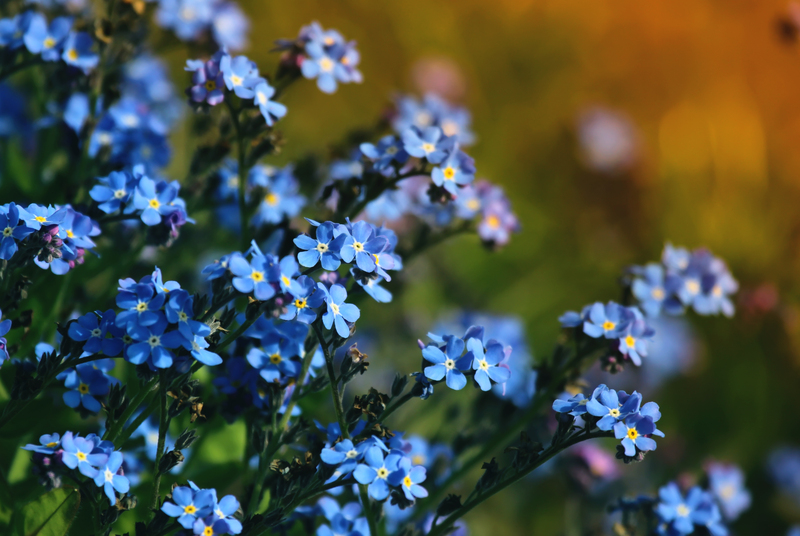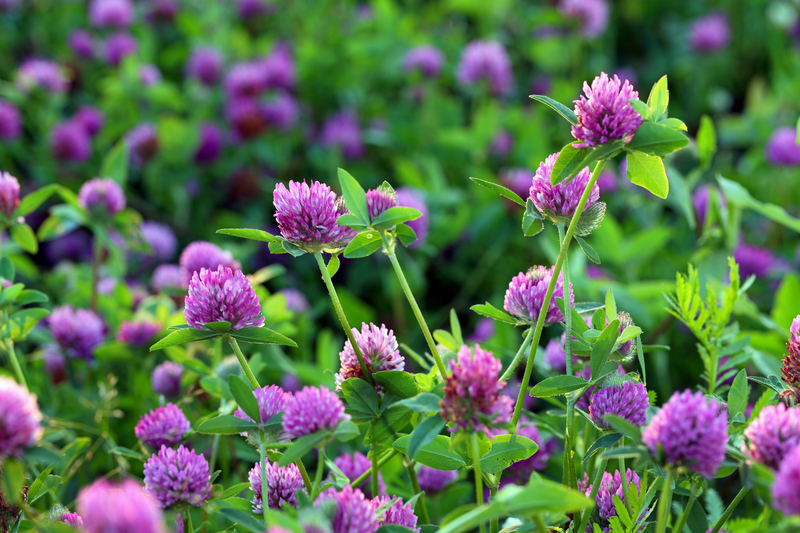Surprising Tips and Tricks for a Perfect Lawn--Beginner's Edition
A vibrant, lush green lawn is the dream of many homeowners. However, achieving the perfect lawn can seem overwhelming, especially for beginners. Luckily, we've compiled a list of surprising tips and tricks for a perfect lawn, specifically tailored for those just starting their lawn care journey. These actionable lawn care secrets go beyond common advice and help you create your own verdant paradise.
Why a Healthy Lawn Matters
A well-maintained lawn is more than just attractive. Healthy lawns help clean the air, reduce soil erosion, and even cool your home's surroundings. Plus, a perfect yard boosts curb appeal and increases your property value. Whether you're aiming to host summer barbecues or simply want a peaceful green outdoor space, the following advice will get you started on the right track.

Unveiling the Secrets to a Perfect Lawn: What Most Beginners Overlook
While standard tips like watering and mowing are essential, there are lesser-known strategies that dramatically improve lawn health. Get ready to explore some game-changing methods for achieving a perfect yard!
1. Choose the Right Grass Type for Your Region
- Why it matters: Not all grasses thrive in every climate. Choosing the perfect grass variety ensures less maintenance and better results.
- Cool-season grasses (such as Kentucky bluegrass, fescue, and ryegrass) are ideal for northern climates, while warm-season grasses (like Bermuda, St. Augustine, and zoysia) excel in the South.
- Research your region's recommended grass species or ask your local lawn expert for advice.
2. Test--and Improve--Your Soil
Soil is the foundation of every healthy yard. Perfect lawns start with nutrient-rich, balanced soil.
- Pick up an inexpensive soil test kit (available online or at garden centers).
- Look for pH and essential nutrients like nitrogen, phosphorus, and potassium.
- Amend your soil based on the test results--add lime for acidic soil or sulfur for alkaline, and supplement nutrients as needed.
- Top tip: Soil testing is a surprisingly easy way to tailor your lawn care routine and achieve optimum growth.
3. Mow High, Not Low
A common misconception is that cutting your grass short will reduce mowing frequency. In fact, mowing too low can stress your lawn and invite weeds.
- Elevate that mower! Most lawns stay healthiest when grass is kept at 2.5-4 inches high.
- Longer blades encourage deep roots and provide natural shade to the soil, which suppresses weeds and conserves moisture.
- Change up your mowing pattern each time to prevent soil compaction and rutting.
The Art of Proper Watering: Surprising Lawn Watering Techniques
4. Water Deeply and Infrequently
How you water matters as much as how much water you apply. Many beginners make the mistake of shallow, frequent watering, which can actually harm your lawn.
- Watering deeply (about 1 inch, once or twice a week) encourages roots to grow down, making your grass more drought-resistant.
- Schedule watering sessions in the early morning, when evaporation loss is minimal and disease pressure is low.
- Use an empty tuna can to catch water while you irrigate--when it's full, you've hit the magic one-inch mark.
- Extra tip: Use a screwdriver to check soil moisture. It should easily penetrate 4-6 inches into the ground.
5. Don't Forget to Sharpen Your Mower Blades
One of the most overlooked secrets for a perfect lawn is the sharpness of your mower blades.
- Dull blades tear grass leaves rather than cutting them cleanly, leading to ragged edges that brown and invite disease.
- Sharpen your blades at least once per season (more often if you hit sticks or rocks).
The Power of Fertilization and Lawn Feeding Tricks
6. Feed, But Don't Overfeed
Fertilizer is a powerful tool--but more isn't always better. Overfertilizing can burn your lawn or pollute waterways. Follow these fertilizing practices for a perfect lawn:
- Apply fertilizer at the right time--typically once in spring and once in fall for cool-season grasses, and spring through early summer for warm-season types.
- Slow-release fertilizers are best, as they provide a steady nutrient supply.
- Go organic! Products like compost and natural lawn feeds improve soil health over time.
- Always water in fertilizer to avoid "burning" your grass.
7. Embrace Grasscycling
Did you know that leaving short grass clippings on the lawn (rather than bagging them) is one of the easiest ways to fertilize your lawn naturally?
- Grass clippings break down quickly, returning valuable nutrients--especially nitrogen--to your soil.
- Use a mulching mower for best results.
- Bonus: Grasscycling saves time and reduces yard waste.
Surprising Tips for Weed and Pest Control
8. Staying Ahead of the Weeds--Organically
A weed-free lawn is every beginner's target, but harsh chemicals aren't always necessary. Here are some natural, beginner-friendly ways to keep weeds at bay:
- Maintain a thick, healthy turf--this crowds out most weeds naturally.
- Hand-pull weeds early before they go to seed.
- Apply corn gluten meal in early spring to prevent weed seeds from sprouting (it also acts as a mild fertilizer!).
- Spot-spray tough weeds using targeted, pet-safe herbicides.
9. Welcome Beneficial Insects and Friendly Bugs
Not all bugs are bad for your lawn. Encouraging the right insects can help control pests and reduce your need for pesticides.
- Ladybugs, ground beetles, and spiders eat lawn pests like aphids and grubs.
- Avoid blanket pesticide use, which kills beneficial bugs as well as pests.
- Try planting small wildflower patches; they attract pollinators and helpful predators.
Lawn Aeration, Dethatching, and Topdressing: The Essentials for a Perfect Lawn
10. Aerate the Lawn Once a Year
Compacted soil and thatch buildup starve grassroots. Aerating, or poking small holes in your lawn, allows air, water, and nutrients to reach the roots.
- Use a manual or powered aerator in fall (for cool-season lawns) or spring (for warm-season lawns).
- Focus on high-traffic areas, which tend to compact fastest.
- Aeration improves drainage and gives a beautiful, resilient lawn.
11. Dethatch for a Healthier Lawn
A little thatch (the brown, spongy layer of organic matter between grass and soil) is fine, but too much (over 1/2 inch thick) suffocates your lawn.
- Use a dethatching rake or machine each year--especially if your lawn feels bouncy or water pools on the surface.
- Dethatching in early fall or spring gives grass time to recover.
12. Try Topdressing With Compost
Spreading a thin layer of compost over your lawn, known as topdressing, boosts soil fertility and helps turf recover after aeration or dethatching.
- Use well-aged compost and spread no more than 1/4 inch over the grass.
- Rake lightly to make sure compost falls through to the soil.
- Tip: Topdressing combined with overseeding creates lasting lawn density.
Bonus Lawn Tips & Clever Hacks You Never Knew Existed
Here are some unconventional (but effective!) ways to take your lawn perfection to the next level as a beginner:
- Edge Your Lawn Frequently. A clean edge gives any lawn a professional finish and stops grass from creeping into garden beds.
- Use Epsom Salts--Dissolve 1 tablespoon per gallon of water to give your lawn a gentle magnesium boost, especially in magnesium-deficient soils.
- Reseed Thin Spots--Don't wait for bare patches to spread! Loosen the soil, sprinkle new seeds, and lightly cover with topsoil for fast recovery.
- Install a Rain Gauge--Track exactly how much rain (or irrigation) your lawn receives, adjusting watering routines to avoid over- or underwatering.
- Fill Animal Holes With Soil and Seed--Discourage digging critters by promptly filling any holes and reseeding.
- Shovel Snow Without Piling on the Lawn--Heavy snow piles and ice can smother grass and cause dead spots come spring.
Seasonal Lawn Care Calendar: When to Do What
For best results, keep this lawn care calendar in mind:
- Early Spring: Rake, aerate, dethatch, apply pre-emergent weed control.
- Spring: Fertilize, seed bare spots, start mowing, water as needed.
- Summer: Mow high, water deeply, mulch, spot-treat weeds, watch for pests.
- Fall: Fertilize, aerate (cool-season), overseed, clear leaves, prepare lawn for winter.
- Winter: Limit foot traffic, clean up debris, avoid salt runoff from sidewalks.

Frequently Asked Questions (FAQs) for Beginner Lawn Enthusiasts
Q: What is the easiest grass to grow for beginners?
A: Fescue and perennial ryegrass are considered some of the easiest for beginners. They're resilient, germinate quickly, and withstand a variety of soil and sun conditions.
Q: How often should I mow my lawn?
A: Aim to mow when your lawn grows about one-third taller than its recommended height. For many lawns, that's around once a week during peak growing periods.
Q: Can I have a perfect lawn without chemicals?
A: Absolutely! Focus on soil health, regular overseeding, deep watering, and diligent weeding. Organic practices build a strong turf that naturally resists pests and diseases.
Q: Why does my lawn have bare spots?
A: Bare spots are common due to pet urine, disease, compaction, or shade. Remove dead grass, loosen the soil, reseed, and water gently until new grass is established.
Q: Is there a best time of day to water my yard?
A: Yes! Water between 6-9 a.m. to reduce evaporation and prevent fungal infections.
Takeaway: Any Beginner Can Achieve the Perfect Lawn
Don't be intimidated by lawn care. Armed with these surprising tips and tricks for a perfect lawn, you can transform your outdoor space--even if this is your first try. Remember:
- Start with your soil.
- Choose the right grass species for your region.
- Mow and water smarter, not harder.
- Embrace natural lawn care solutions and let nature help you out.
- Follow a simple lawn care calendar to stay ahead of the game.
With a little patience and these beginner-friendly techniques, your yard will soon be the talk of the neighborhood. Feel proud as you watch your perfect lawn grow greener, thicker, and healthier--one season at a time!
```